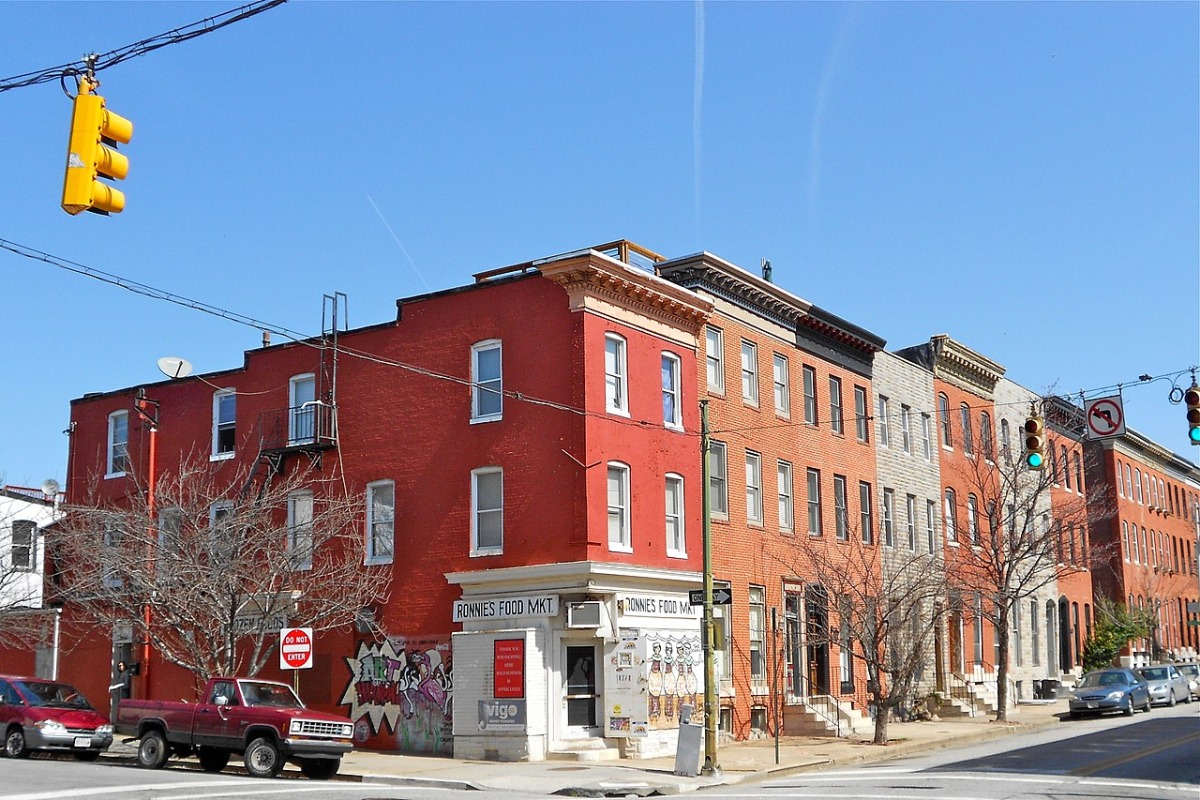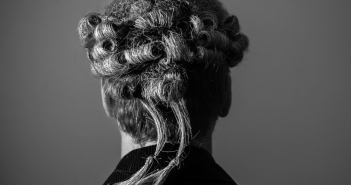“You have no appointment.”
I’d emailed, left messages, and read their mission statement: To free the innocent, prevent wrongful convictions, and create fair, compassionate, and equitable systems of justice for everyone.
No. I have no idea what I’m doing, but I’m doing it. Walking downtown to the office of The Innocence Project in Manhattan. On my way, I look up to see the spike of the Freedom Tower cutting through dense spring clouds. It makes me wonder, in this country of income disparity, prejudice, and Proud Boys, is there indeed justice for all?
“Well, I’m here now and I’d like to speak to an attorney.”
I fucked up. No one is coming to speak with me.
Within minutes, I’m greeted by an affable intake attorney named Dara, who gives me her full attention. I explain that I’m a writer advocating for a wrongfully accused inmate at Cumberland Prison. Emmanuel Clark is serving a life sentence for first degree murder. After letting her know that Emmanuel’s files were given to their office by his cousin four years ago to no conclusion, she agrees to take my 16-page typed transcript and assures me the office will again give his case … a look. I’m informed it will take time. That there are no guarantees. With profuse thanks, I’m gone.
For months now, I’ve interviewed Emmanuel Clark. An inmate serving a life sentence with no parole at Cumberland Prison in Baltimore. He went in at age 19. Now he’s 46 years old, serving time for a crime he claims he did not commit. We communicate by prison pay phone, trying to untangle a web of injustice. One that is all too common when you’re young, poor, and not white.
I learned about Emmanuel through my friend Greg. Someone who knows what it’s like to be incarcerated. But for the past 10 years, Greg has focused his life on sobriety, and making people laugh, while attempting to make a difference in the world. He heard about Emmanuel’s plight through his cousin, felt compelled to advocate for him, and solicited my help in the process. Both my friend and I have had our share of family dysfunction. Probably what lead us both to stand-up comedy and a decade-long friendship. But we’re here now. Meeting once a week, to put together this complex puzzle that a corrupt legal system once scattered.
A robot operator asks us to accept the call, “From an inmate at Cumberland Correctional Facility.” Press zero, and you’re connected. Allocated a strict 30-minute time limit for which the inmate has to pay. At 90 cents an hour on a jail work program, one phone call per week is a significant expense. But after two decades of no one listening to his story, Emmanuel decides it’s worth it. He’s excited. There’s a lot to tell and not much time. Greg in his raspy, Good Fellas voice repeats, “Very simple, Emmanuel, go slow and don’t give us too many details all at once.” As he speaks, I’m reminded of Denzel Washington in the movie, Philadelphia and his unforgettable line, “Tell it to me like I’m five.”
Born Emmanuel Clark, in a rough section of Baltimore City, neither the Greek American father he never knew, nor a Native-American mother were capable of raising him. Both parents had a dependency on drugs and alcohol which would later prove lethal for their son. What followed was foster care, juvenile detention centers, and homelessness. Out of desperation to survive, 16-year-old Emmanuel started selling crack on the street. And by 1997, he was convicted of murder one. A life sentence. Without parole.
Emmanuel had been selling in Patterson Park. An area of Baltimore known as Butcher’s Hill. His customers were, for the most part, prostitutes and petty thieves. There, he met a woman named Bonnie Felicetti who worked as an admin for a lawyer. But Bonnie was also a known prostitute and crack addict. She lived with her husband Tony, also a drug user, and a 38-year-old friend called Louis Koch. Emmanuel didn’t know Louis well but described him as follows:
“When you talked to him, you knew he was kind of…slow. Bonnie would get high and use Louis to buy drugs when she didn’t want to leave the house.”
On Sunday, June 16th, the night before the murder, Emmanuel gave his last gram of crack to Bonnie with the promise that she’d pay him back. 60 bucks. Within the next couple of days.
Next morning, Monday, June 17th, Emmanuel got breakfast at Hardee’s, before walking to Patterson Park, where his cousin would re-up his supply. He was there for several minutes when Louis showed up, saying Bonnie would be home from work. And had his 60 bucks.
“I figured I’ll hang out there, get my money, wait for my cousin and get off the streets.”
When Emmanuel followed Louis home, he was led through an alleyway. Not the front entrance.
“Louis went through the gangway. I didn’t think anything of it at the time. I just followed him.”
As the two entered Bonnie’s backyard, Emmanuel saw panes of glass on the lawn. He noticed the outside windows were broken, but the inside windows were intact.
“Louis asked me to hand him the glass and I did. Whatever was in the yard, I gave him. Some of the glass I handed, he put on the kitchen table and then threw it away.”
Both men then entered through the window. Emmanuel was there for maybe five minutes, when he heard his cousin’s whistle.
“We had calls to let us know we were looking for each other. When I left Louis, he was alive.”
Responding to the call, Emmanuel headed back to his cousin’s, re-upped his supply, then proceeded to where he’d been staying at his girlfriend Tonya’s house.
“When we’d made it back into the neighborhood, there was police everywhere. I didn’t find out Louis was dead until the next day.”
Tonya and her mother didn’t like Emmanuel selling drugs. So, he’d applied at Teddy’s Roofing and got the job.
“It was my first day of work and when I got home that night, Tonya was in our bedroom crying.”
“What did you do?”
“What do you mean what did I do? I didn’t do nothing!”
“The police was here asking questions about you.”
Louis was pronounced dead on June 17th, stabbed with a screwdriver over 100 times. Fingerprints on the glass pointed the police to Emmanuel, and the weight of these accusations triggered a psychological breakdown. 400 milligrams of Thorazine and Tegretol were administered. Both antipsychotics.
“I had a mental snap.”
“I was given heavy doses of drugs.”
“I was a zombie.”
After ten days of treatment, Emmanuel was back at the regular detention center where he faced hours of grueling questioning.
“I was scared terribly. The cops said I would never see my girlfriend again. Eight hours later, I repeated everything they told me. I just wanted it to be over.”
If Emmanuel got something wrong, if something didn’t fit the detective’s narrative, they would correct him. Under the influence of drugs, he was coerced into giving a false statement.
“The confession I gave the cops didn’t match the evidence. This was in my taped confession. Which, years later, they claim they lost.”
Reading through Emmanuel’s case file, I noticed a few things. Fingerprints on the glass belonged to both Emmanuel and Louis. Glass found placed in the trash. The cops told Emmanuel to confess that he broke in through the window. But the question remains: What kind of robber breaks in and then places the glass in trash bins? There were also a pair of pliers and knife found near the window which fits with Emmanuel’s narrative that Louie was being locked in the house by Bonnie and Tony.
After his arrest, Emmanuel awaited trial, locked up in Baltimore City Detention Center for a year and a half. Feeling his fate was sealed, he attempted an escape.
From the Archives and Re-mastered, #DavidLangwallner's recalls his work on behalf of the @innocence in #Kenya and draws his own conclusions. #harrygleeson @amandaknox @AdamRamsay @sunnystolentime @AlanDersh @kieranfagan @think_or_swim @whittledaway https://t.co/bf37bNuaZQ
— CassandraVoices (@VoicesCassandra) January 10, 2020
“I was going down and I was desperate.”
Digging his way out of jail through a catwalk, he was caught just as he jumped the barbed wire fence. Photographs taken of him that night show scrapes, cuts from a fence and his hard fall. These pictures from his failed escape were then transferred into evidence for his impending trial. Evidence which was conflated, to make it appear as if those injuries occurred the night of Louis Koch’s murder, as a result of a struggle between the two. At trial, Emmanuel’s public defender never questioned those images detectives and a prosecuting attorney presented to the jury.
“I kept telling my lawyer the photos they were using were from the escape, NOT from the crime scene. All he could say was, “I don’t know Mr. Clark. They went into evidence.”
Emmanuel was convicted of first-degree felony murder. For 26 years he’s been a model inmate at Cumberland Prison with no history of violence. He went in barely out of his teens and is now a middle-aged man who spends his days in a cell no bigger than the average American bathroom. Days when the prison goes on lockdown, for lack of staff or bad behavior from a prisoner, Emmanuel spends 22 hours in his cell.
“It’s a fishbowl. They can see everything we do. There is no privacy.”
On more than one occasion, I’ve asked Emmanuel how he has spent so many years like this, and the answer is always the same.
“You don’t want to know.”
I’ve asked my friend Greg too, how he dealt with being incarcerated for the stint that he did. And on every occasion his answer is always the same.
“When you’re in prison time stops.”
With our interviews completed, Greg and I had limited choices. We could wait for someone to take the case, or solicit another pro bono office. At Emmanuel’s suggestion, I contact Project Six, and The Integrity Unit, two Baltimore agencies with similar missions of reversing and/or reducing sentences for the wrongfully accused.
In the interim, I go back and forth with The Innocence Project, inquiring about the status of Emmanuel’s case. When I get the same response every time, that they have limited staff, massive caseloads, and thousands of pages to read and review, I have to let it rest. But my last email was a doozy. An article I sent on Robert Patton, one of the three detectives in Emmanuel’s case. Patton had been accused of four different types of misconduct. Including, but not limited to, withholding the testimony of key witnesses.
The decision to devote two of his podcasts to Emmanuel’s predicament, resulted in Greg’s phone lines lighting up with calls from distant family members and intrigued listeners. For the duration of his segment, there is full support but no funds with which to move forward in a tangible way. To retain a lawyer worth his or her salt. An intricate case, such as this, would cost at least 50 grand. Emmanuel’s family doesn’t have that. What they do have are jobs, kids, worries, and bills.
Emmanuel has confessed many times that even though he often feels forgotten, he understands. For people on the outside life goes on, but for him time has, in a word, frozen.
Six months after my downtown visit, Emmanuel received a letter that could change his life. I’m paraphrasing, but it went something like this: “We’re pleased to inform you that The Innocence Project has agreed to take your case. Please fill out the attached form. Upon our receipt, you will be assigned a lawyer and a legal team. There is no fee for our services.”
The odds are still stacked against Emmanuel. When a system puts you in prison, they are unyielding. Unwilling and unlikely to admit their mistakes. Prisons are big business. The city of Baltimore spends roughly 300 million dollars every year to incarcerate people. There is no promise Emmanuel will ever see the outside of a prison wall. Nor is there a set time frame for the re-trying of his case. The legal road back to equanimity is a long and winding one. But for the first time in decades of unimaginable suffering, these clouds of despair have been pierced. By hope. For justice.
Featured Image: Butchers Hill Historic District on the NRHP since December 28, 1982 The historic district is roughly bounded by Patterson Park Ave. and Fayette, Pratt, Chapel, Washington, and Chester Sts. in southeast Baltimore, Maryland.




